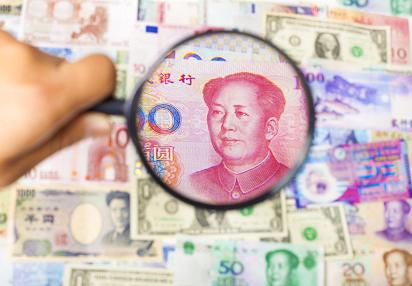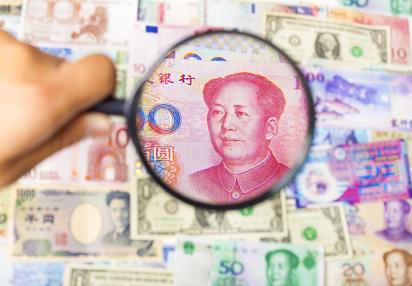
BEIJING, Jan. 31 (Xinhua) -- The Chinese yuan staged strong performance in the first month of 2018, far from what the market had anticipated.
The central parity rate of the Chinese currency renminbi (RMB), or the yuan, strengthened for the seventh consecutive trading day to 6.3267 on Monday, the strongest level since Nov. 2, 2015.
The first 30 days of 2018 witnessed the yuan's central parity rate gain 3.1 percent against the U.S. dollar, over half of the 5.81 percent strengthened for the whole 2017, the sharpest annual appreciation in nine years.
The RMB also demonstrated strength against other currencies. The CFETS RMB Index, which measures the yuan's strength relative to a basket of currencies, came in at 95.7 last Friday, rising from 94.85 at the end of December.
The persistent weakening of the U.S. dollar was the external reason behind yuan's strong reading, said Liang Hong, chief economist of the China International Capital Corporation (CICC).
The dollar index, a gauge that measures the U.S. currency's strength against six other major currencies, has declined over 3 percent since the beginning of this year.
Last week alone, the greenback dropped 1.7 percent following U.S. Treasury Secretary Steven Mnuchin's remarks that a weaker dollar would be good for trade.
Factors including the incipient tapering of monetary accommodation at major international central banks and the expectation of rate hikes abroad also affected the dollar's value, according to a CICC report.
However, the fundamental reason behind the yuan's rally is a robust Chinese economy, which boosts investor confidence in the currency, said Guotai Junan Securities.
China's economy expanded 6.9 percent last year, picking up for the first time in seven years and well above the government's annual target of around 6.5 percent.
The International Monetary Fund has raised its forecast for China's economic growth in 2018, expecting China's GDP growth to stand at 6.6 percent this year, up from the 6.5-percent prediction made last October.
Apart from strong GDP growth, China has also maintained a current account surplus, abundant forex reserves, sound fiscal conditions, and stable financial systems, all helping support its currency.
In addition, China has cracked down on illegal capital transfers disguised as outbound investment, stepped up regulation of irrational overseas investment activities, and strengthened scrutiny over irregular forex purchases by individuals.
A "counter-cyclical factor" was introduced to the existing pricing model of the yuan's central parity rate against the dollar, aiming to moderate pro-cyclical fluctuations driven by irrational sentiment in the foreign exchange market.
"Continued strength of the Chinese yuan sets the foundation for a more affirmative outlook for financial opening up, as well as further progress in RMB internationalization this year. In this regard, financial institutions with cross-border capabilities stand to benefit," the CICC said in a note.
With sound economic fundamentals, improved regulation and increased global use of the currency, the yuan's stability has been justified and will stay well-supported, said Wang Peng, a researcher from China Development Bank Securities.
The dollar might stay on the downward trajectory in 2018, but not as steep as the market saw in January, which will support yuan's moderate rise, said Wang.
Economists also cautioned that a fast appreciation of the yuan and rapid capital flow to the Chinese market may push up property and capital market prices and drag down exports.
"Property and capital market bubbles should be alerted," said Zong Liang, a senior researcher with the Bank of China.




 A single purchase
A single purchase








